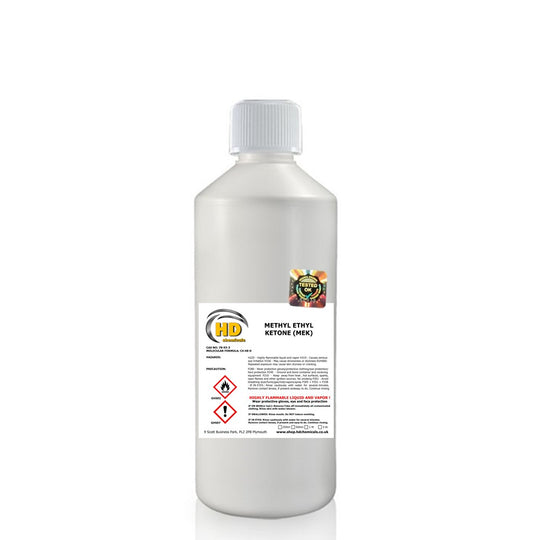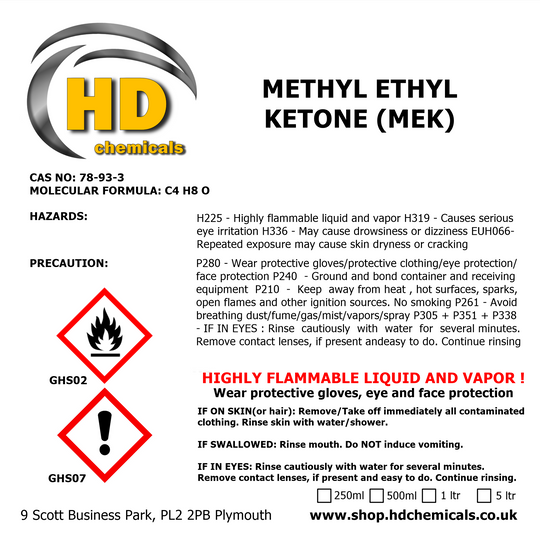Epoxy paint is a durable and resilient coating used on various surfaces, including floors, countertops, and industrial equipment. While it offers excellent protection and aesthetics, there are times when you may need to remove epoxy paint, whether for repair, renovation, or simply to change the surface's appearance. One effective method for epoxy paint removal is using Methyl Ethyl Ketone (MEK), a potent solvent widely employed in industrial applications.
In this blog post, we will delve into the world of epoxy paint removal with MEK. We'll explore the properties and safety considerations of MEK, discuss the preparation steps before starting the removal process, and present a step-by-step guide on how to effectively remove epoxy paint using MEK.
1. Understanding Methyl Ethyl Ketone (MEK)
Methyl Ethyl Ketone, commonly known as MEK or butanone, is a colorless, volatile, and highly flammable organic solvent with a distinct acetone-like odor. It is widely used in various industries, such as manufacturing, coatings, and printing, due to its excellent solvent properties. MEK efficiently dissolves and softens epoxy paint, making it an effective choice for removal.
Safety Considerations:
Before we delve into the epoxy paint removal process, it is essential to address safety considerations associated with using MEK:
Proper Ventilation: MEK vapors can be harmful when inhaled in large quantities. Always work in a well-ventilated area, preferably outdoors or in a space equipped with exhaust fans.
Personal Protective Equipment (PPE): Wear appropriate PPE, including chemical-resistant gloves, safety goggles, and a respirator mask, to protect yourself from skin contact and inhalation of vapors.
Flammability: MEK is highly flammable. Keep all sources of ignition, such as open flames, sparks, or electrical equipment, away from the work area.
Environmental Concerns: MEK is toxic to aquatic life and can be harmful to the environment. Dispose of used MEK and any contaminated materials responsibly, following local regulations.
2. Preparing for Epoxy Paint Removal
Before diving into the epoxy paint removal process, adequate preparation is crucial to ensure a safe and effective procedure:
a. Gather Supplies: Besides MEK, you'll need chemical-resistant gloves, safety goggles, a respirator mask, paintbrushes, scrapers, and plenty of rags.
b. Test Compatibility: Before applying MEK to the entire surface, conduct a compatibility test on a small, inconspicuous area to ensure that it does not damage or discolor the material.
c. Remove Obstacles: Clear the area of any obstacles, furniture, or items that might hinder the removal process.
d. Protect Surrounding Areas: Cover adjacent surfaces or objects with plastic sheets or masking tape to prevent accidental MEK exposure.
3. Step-by-Step Guide to Removing Epoxy Paint with MEK
Now that you're well-prepared, let's dive into the epoxy paint removal process using Methyl Ethyl Ketone:
Step 1: Test Compatibility (Reiterated)
Perform the compatibility test as mentioned earlier to confirm that MEK does not adversely affect the surface or material.
Step 2: Wear Safety Gear
Put on your chemical-resistant gloves, safety goggles, and a respirator mask to safeguard against skin contact and inhaling MEK vapors.
Step 3: Apply MEK to the Epoxy Paint
Dip a clean paintbrush into the MEK and apply a generous coat to the epoxy paint surface. Allow the MEK to sit for a few minutes to soften the paint.
Step 4: Scrape the Softened Epoxy Paint
Using a paint scraper or putty knife, gently scrape away the softened epoxy paint. Be cautious not to damage the underlying surface.
Step 5: Repeat the Process
If the epoxy paint remains stubborn, repeat steps 3 and 4 until the majority of the paint is removed. Avoid excessive scrubbing, as it may damage the surface.
Step 6: Clean the Surface
Using a clean cloth dampened with MEK, wipe down the surface to remove any remaining epoxy paint residue.
Step 7: Dispose of Used MEK Properly
Dispose of the used MEK and any contaminated materials according to local regulations and guidelines.
4. Post-Removal Cleanup and Safety Measures
After successfully removing the epoxy paint, follow these post-removal cleanup steps:
a. Ventilate the Area: Ensure the area is well-ventilated to disperse any remaining MEK vapors.
b. Properly Store MEK: Seal the container of MEK securely and store it away from heat and direct sunlight in a safe and ventilated location.
c. Clean Tools and Equipment: Clean the paintbrushes, scrapers, and other tools used in the removal process thoroughly with MEK before storing them.
d. Wash Hands and PPE: After completing the removal process, remove your gloves, goggles, and respirator mask carefully. Wash your hands with soap and water thoroughly.
Removing epoxy paint using Methyl Ethyl Ketone (MEK) is an effective method to restore surfaces or prepare them for new coatings. However, it's essential to prioritize safety throughout the process due to MEK's flammability and potential health hazards.
Always follow safety guidelines, wear appropriate protective gear, and work in well-ventilated areas when using MEK. Remember to conduct compatibility tests before applying MEK to the entire surface and dispose of used MEK responsibly to protect the environment.
By following the step-by-step guide provided in this blog post, you can confidently tackle epoxy paint removal using MEK and achieve impressive results. Just remember: safety first, and happy renovating!
Frequently Asked Questions (FAQs)
Is MEK safe to use?
MEK is considered hazardous due to its flammability and potential health risks. It can cause skin and eye irritation upon direct contact and can be harmful if inhaled or ingested. Proper safety precautions, including the use of personal protective equipment (PPE) and working in well-ventilated areas, are essential when handling MEK.
Can MEK be used as a paint remover?
Yes, MEK is often used as a paint remover, especially for epoxy-based paints and coatings. Its strong solvent properties can effectively soften and dissolve paint, making it easier to remove.
How do I use MEK as a paint remover?
To use MEK as a paint remover, apply the solvent to the painted surface using a brush or cloth. Allow it to sit for a few minutes to soften the paint, then gently scrape off the softened paint using a scraper or putty knife. Follow safety guidelines and use appropriate PPE during the process.
Can MEK be used to remove other types of coatings?
While MEK is effective for removing epoxy-based paints and coatings, it may not be suitable for all types of coatings. It is essential to perform a compatibility test on a small inconspicuous area before attempting to remove the entire coating.
Can MEK be used to clean tools and equipment?
Yes, MEK is commonly used to clean tools and equipment in industrial settings. It can effectively remove various residues, such as adhesives, resins, and paints, from tools and surfaces.
Is MEK harmful to the environment?
Yes, MEK is harmful to the environment and can be toxic to aquatic life. It should be handled and disposed of responsibly, following local regulations and guidelines.
Can MEK be used for medical or pharmaceutical purposes?
No, MEK is not intended for medical or pharmaceutical use. It is an industrial solvent and should only be used in appropriate industrial settings and applications.
How should I store MEK?
MEK should be stored in a cool, well-ventilated area away from sources of ignition, such as open flames and heat sources. Keep the container tightly closed and out of reach of children and pets.
All information provided by MP Interio our trusted company we work with for many years.


